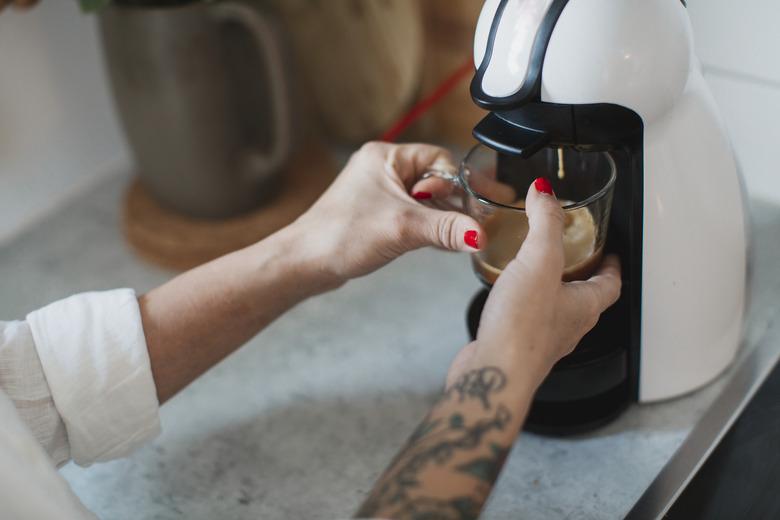What To Do If Your Coffee Maker Smells Like Vinegar
A clean coffee maker creates a better-tasting cup of joe every time. How often you clean the coffee maker and your choice of detergents, natural or commercial, can affect the taste of the final brew when it's not done properly.
Cleaning the Coffee Pot
Vinegar is a common effective and affordable way to clean and descale a coffee maker. However, it can leave behind an acrid and unpleasant odor, which can cause the coffee to taste bad after descaling. Swishing clean water through a used coffee pot immediately after it's emptied of the rich, brown brew will remove the debris you can see. However, this simple maneuver won't thoroughly clean the pot and may leave behind a funky odor over time.
Descaling Coffee Pots
Hard water deposits can create a bad taste and gum up the working parts of the coffee maker. The machine should be decalcified at least once a month to keep the hard water deposits from building up and clogging the holes of the basket or parts within the water reservoir.
Vinegar does quick work for descaling a coffee maker, according to Molly Maid. Add a few cups of straight vinegar to the water reservoir and run it through a regular cycle. This process can be repeated without damaging the interior of the coffee maker or the carafe.
Commercial cleaners made for cleaning coffee machines, such as the Keurig, can also leave behind a bad taste. If the cup of coffee from the Keurig tastes like chemicals after descaling, the machine may need a good washing with plain water. This can be repeated until the chemical taste disappears.
Ridding the Machine of Vinegar
Once the vinegar descaling is complete, you may notice a strong, acrid odor is left behind. Good Housekeeping recommends placing a paper filter in the basket and running a fresh, plain water cycle through the recently descaled machine. This typically can flush out the vinegar taste and odor. If the odor remains, try another flush of plain water before advancing to stronger remedies.
Rinsing the coffee maker reservoir and carafe thoroughly and immediately after cleaning it with vinegar can greatly reduce the chance of vinegar sticking around to muck up the machine. If you cleaned the Keurig with vinegar and now milk curdles, it's more than likely due to significant vinegar residue.
Remove Strong Vinegar Odors
A rinse of soap and water through the carafe can lift any stubborn vinegar residue from the glass or metal sides of the coffee carafe. If the odor remains, place several ice cubes in the bottom of a cold, empty coffee carafe. Add a cut-up lemon and a tablespoon of salt. Swish this mixture around and let it sit for an hour before rinsing clean.
If the reservoir still has a vinegar smell, take a damp cloth and gently rub down the interior of the ffiliacoffee machine. Make sure to get into the nooks and crannies. A narrow brush used for baby bottles or metal straws can help you clean any hard-to-reach areas and remove the lingering vinegar residue.
